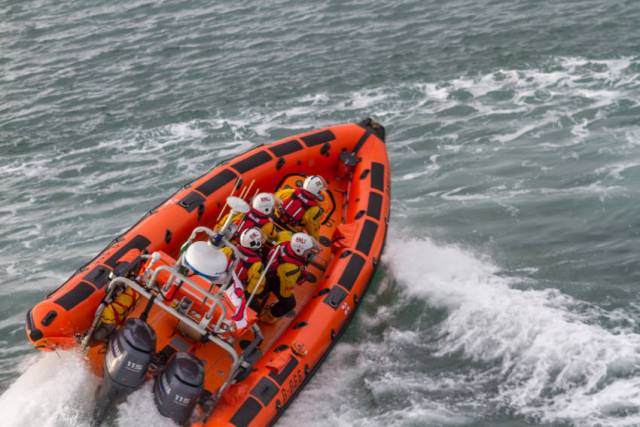Skerries RNLI volunteers responded to three callouts in less than a week starting last Friday (19 July) when they towed a small fishing boat to safety.
They were called out again on Monday to assist three teenagers on an inflatable dinghy, and on Wednesday to investigate a kite surfer in distress.
Shortly before 2pm last Friday afternoon (19 July), one of the Skerries RNLI volunteer crew spotted a small fishing boat that appeared to be drifting quite close to the shoreline.
The volunteer crew launched their Atlantic 85 inshore lifeboat Louis Simson and made their way out to the fishing boat.
There was one man on board and he confirmed that the boat had suffered engine failure. A tow was established and the boat was towed safely into Skerries Harbour.
On Monday evening (22 July), just after 6pm, Skerries RNLI were tasked after Dublin Coast Guard received a call expressing concern for three teenagers in an inflatable dinghy who were drifting off the headland at Red Island.
Just as the crew reached the station, the lifeboat was stood down as the teenagers had managed to make it back to shore.
The pagers sounded once again on Wednesday evening (24 July) at 6.30pm after what appeared to be a kite belonging to a kitesurfer was spotted, semi-submerged, south of Shenick Island off Skerries.
The lifeboat was launched and proceeded directly to the area indicated by the caller. A search of the area was carried out and the object was spotted on the shore of the island.
A crew member entered the water and swam ashore to investigate the object, which turned out to be a discarded tent.
With the crew member safely back on board the lifeboat, the helm updated Dublin Coast Guard and the lifeboat was stood down.
Speaking about the busy week, volunteer lifeboat press officer Gerry Canning said: “With the great weather we’ve been having here has been an increase in callouts all around the coast, particularly involving inflatables.
“We all love to enjoy the water, but we’d advise people to check out the RNLI and Water Safety Ireland websites (RNLI.org and WaterSafety.ie) for tips on how to enjoy yourself while staying safe at the beach.”
































































